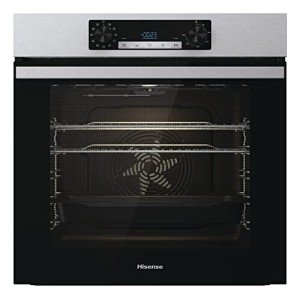The Ultimate Guide to Single Fan Ovens
Single fan ovens, also understood as convection ovens, have acquired popularity in contemporary kitchens due to their ability to offer consistent cooking outcomes. Unlike traditional ovens, single fan ovens circulate hot air around the food, permitting even heat circulation. This article takes an extensive take a look at the functions, advantages, and factors to consider connected with single fan ovens.
What is a Single Fan Oven?
A single fan oven is designed with a fan and an exhaust system that disperse hot air evenly throughout the cooking cavity. This technology makes it possible for food to prepare more evenly and often minimizes cooking times compared to conventional ovens. similar website can be found at the back of the oven and operates in combination with the heating components, assisting in efficient heat transfer.
Secret Features
| Function | Description |
|---|---|
| Even Cooking | Ensures that food cooks uniformly and minimizes the risk of hot or cold areas. |
| Time Efficiency | Minimizes cooking time by as much as 20-25% compared to traditional ovens. |
| Temperature Consistency | Maintains constant temperature level, resulting in trustworthy cooking outcomes. |
| Versatility | Suitable for baking, roasting, and broiling throughout a variety of meals. |
| Energy Efficiency | Normally consumes less energy due to much shorter cooking times. |
Advantages of Single Fan Ovens
- Uniform Cooking: The even circulation of heat ensures that all sides of the food are prepared simultaneously. This helps in achieving elements like browned surface areas and moist centers, particularly in baked goods.
- Faster Cooking Times: The hot air flow allows food to prepare quicker compared to conventional ovens. This effectiveness is especially useful for hectic people or households with tight schedules.
- Energy Savings: Thanks to their much faster cooking times, single fan ovens can often take in less energy, making them a more sustainable choice for environmentally conscious customers.
- Multi-Shelf Cooking: Due to the even heat distribution, numerous meals can be cooked simultaneously on various racks without taste transfer.
- Lowered Need for Preheating: Many recipes can be executed without preheating, thus saving additional time and energy.
Considerations When Choosing a Single Fan Oven
When choosing a single fan oven, several aspects need to be considered to guarantee it satisfies your cooking needs:
- Size: Choose an oven that fits comfortably in your kitchen area while providing adequate capacity for cooking or baking.
- Features: Many single fan ovens come with extra features such as self-cleaning alternatives, programmable settings, and numerous cooking modes (e.g., bake, roast, grill). Evaluate which features are very important for your cooking design.
- Energy Rating: Look for energy-efficient designs that can assist decrease energy costs while also benefiting the environment.
- Brand Reputation: Research numerous brand names and their reviews to guarantee dependability and after-sales service.
- Budget plan: Establish a budget that considers both the initial investment and long-lasting operating costs.
How to Use a Single Fan Oven Effectively
Using a single fan oven is relatively uncomplicated. Nevertheless, to optimize its advantages, some suggestions are necessary:
- Adjust Temperatures: It is typically suggested to decrease the recipe temperature level by approximately 20 degrees Celsius (or 25 degrees Fahrenheit) compared to traditional ovens.
- Use Shallow Baking Trays: Shallow trays allow better air circulation around the food, promoting even cooking.
- Prevent Overcrowding: Leave space between dishes to make sure the hot air streams easily and cooks everything equally.
- Rotate Dishes: For even better outcomes, consider turning baking trays halfway through the cooking procedure, specifically with larger or dense items.
FAQs About Single Fan Ovens
1. What types of foods can I cook in a single fan oven?
Single fan ovens are versatile and appropriate for baking, roasting meats, cooking casseroles, and even dehydrating fruits. They can deal with a broad selection of meals throughout numerous foods.
2. Do I still need to preheat a single fan oven?
While numerous dishes can be cooked without preheating, some baked products, like soufflés or certain bread dishes, might carry out best when the oven is preheated.
3. Can I bake multiple trays of cookies at as soon as in a single fan oven?
Yes, one of the benefits of a single fan oven is that you can bake multiple trays at the same time without compromising results. Just ensure sufficient area for air flow around each tray.
4. Is a single fan oven more energy-efficient than a conventional oven?
Yes, single fan ovens can be more energy-efficient due to quicker cooking times, which decreases general energy consumption.
5. Are single fan ovens great for baking bread?
Single fan ovens are outstanding for baking bread as they supply even heat, which is essential for achieving a good rise and crust.
In conclusion, single fan ovens use various benefits in versatility, performance, and cooking quality. Their ability to cook evenly and save time makes them an appealing choice for home chefs. When selecting a single fan oven, consider factors such as size, functions, and energy usage to find the ideal fit for your cooking requirements. With correct usage and care, a single fan oven can become an indispensable appliance in any kitchen, improving both cooking experiences and outcomes.

